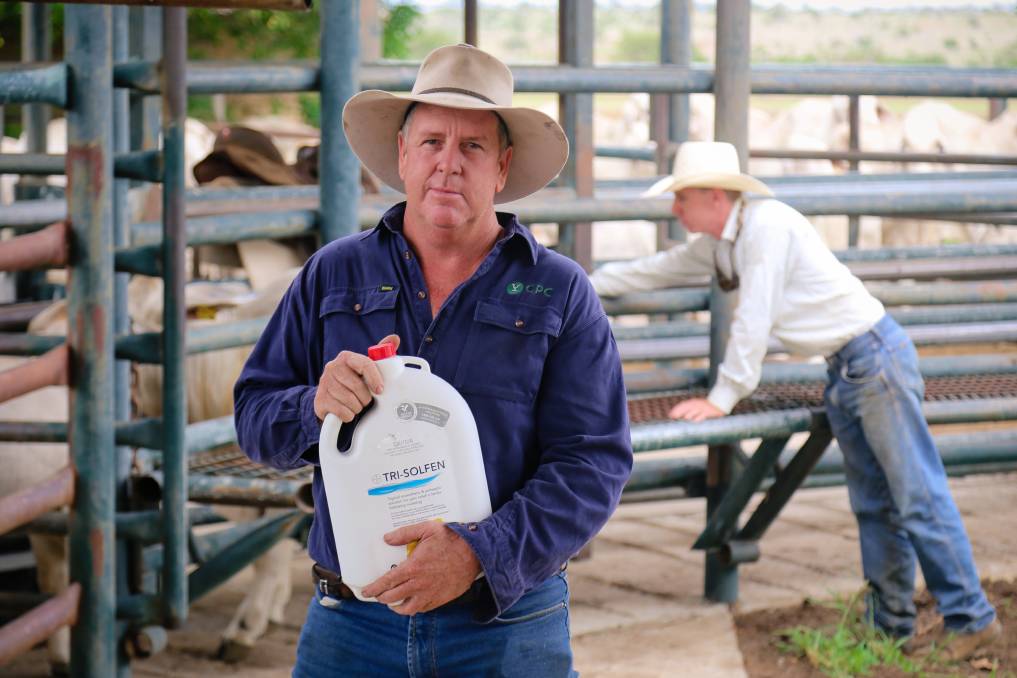Pain Relief is the right thing to do
June 2, 2011
By Barb Glen, Lethbridge bureau
June 2, 2011
CALGARY — Pain management in cattle for dehorning and castration may have benefits for producers.
Studies show higher initial rates of gain and lower incidence of bovine respiratory disease in animals given pain relievers before their horns or testicles are removed.
Dr. Hans Coetzee, associate professor at Kansas State University, cautioned those at a University of Calgary veterinary conference May 18 that more study is needed on the subject, but early results show production benefits from minimizing cattle pain.
“Despite the challenges, pain management feels like it’s probably the right thing to do,” said Coetzee.
“Routine analgesic use may certainly help maintain consumer confidence and market access.
Analgesic use may also improve the health and performance of cattle after castration.”
Challenges include accurate assessment of animal pain, access, effectiveness and administration of pain medication, persuading producers of benefits and responding to the scrutiny of animal welfare advocates.
Only one in five U.S. veterinarians uses pain relief at castration, said Coetzee. Access to medication is a major reason hindering use.
“We currently have no analgesic drug specifically approved for use as pain relievers in cattle. There are anti-inflammatories but not analgesics.”
Meloxicam is approved for use in Canada to alleviate pain associated with debudding and dehorning, as recommended by the National Farm Animal Care Council.
Coetzee said a Kansas State study showed a $52 per head difference in returns between late-castrated bulls and steers of the same age.
Cutter bulls exhibited more health problems, incurring costs in treatment and labour.
That indicates pain management might have a financial benefit if it improves animal health after castration, but there are other reasons as well.
“This is the 10,000 kilogram elephant in the room, and we are talking about castration,” he said.
“Increasingly this is a practice that is being scrutinized by animal welfare groups and this is something that we need to keep an eye on, especially faced with the fact that … data suggests that less than one in five U.S. producers or practitioners use any type of analgesia at the time of castration. It is not something that we routinely do with these animals and yet something we need to be aware of from an animal welfare point of view.”
Coetzee said 10 million calves are castrated in the United States every year. Cattle and veterinary groups say anesthetic use is a good idea, but it is not required or legislated.
However, New Jersey has implemented rules for castration and more states could follow that lead, he said.
Animal welfare groups and consumers have an ever-greater influence on cattle production, primarily through restaurant chain policies demanding humane production methods.
Those policies generally apply to audits of the slaughter process and facilities, but Coetzee said that could change.
“These audits have not extended out into the farm, but it’s not beyond the realms of possibility that the next step, especially as the animal rights groups become more active, is that they may then start scrutinizing some of the practices on the farms.”
Coetzee said this increased scrutiny makes identifying and measuring animal pain more important. Researchers have used electroencephalography and thermography to identify reactions in cattle to castra- tion and dehorning.
“There’s no getting away from it that managing pain in these animals is difficult,” he said.
“This is a challenge for us because recognition of pain in stoic species like cattle and sheep is complex.”
Research results indicate a pain response and the next step is testing medications and their respective results.
But medications present their own challenges, Coetzee said. They must be effective against pain, easy to administer, long acting, inexpensive, have short withdrawal periods and show a quantifiable return on investment.
Most producers would prefer a drug that can be top-dressed on feed so that animals could eat it before being castrated or dehorned.
Coetzee said it would eliminate time consuming measures such as injection, topical application or bolus administration and likely increase use by producers.
Meloxicam is among the drugs that show the most promise, he added.
In research, cattle were orally treated with meloxicam tablets for about 25 cents per animal. Pain relief lasted for 27 hours and withdrawal period in Canada is 20 days.
Meloxicam is approved for human treatment of osteoarthritis.
